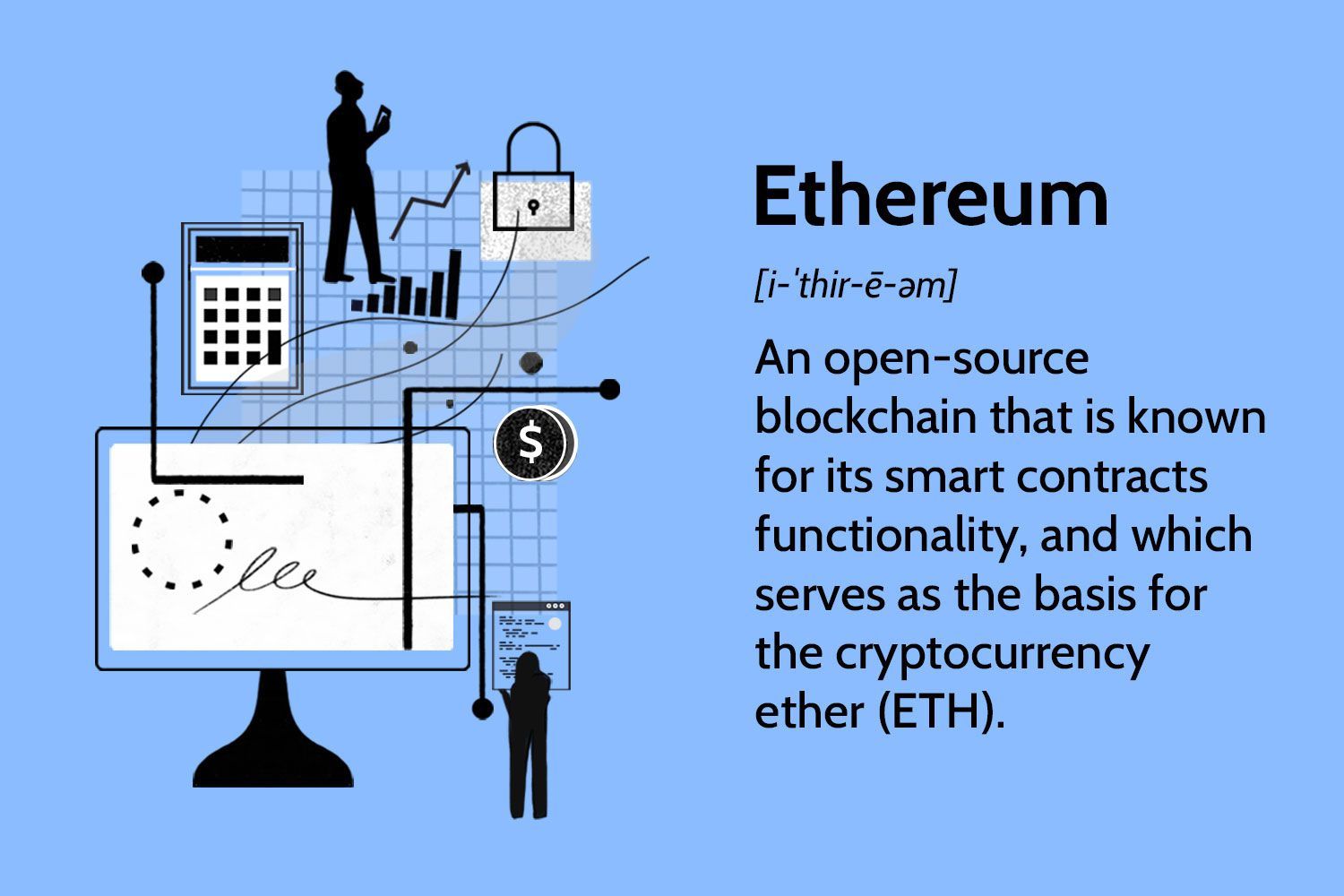Introduction
Ethereum, a decentralized open-source blockchain platform, has gained significant attention in the world of cryptocurrencies. Since its inception in 2015, Ethereum has not only established itself as the second-largest digital currency but has also revolutionized the way we think about blockchain technology. With its native digital currency, Ether (ETH), Ethereum has quickly become a popular investment opportunity for individuals and institutions alike.
As Ethereum continues to gather momentum in the cryptocurrency market, many investors are eagerly speculating on how high its price can go. The price of Ethereum is determined by various factors, including supply and demand dynamics, technological advancements, and market sentiment. In this article, we will explore these factors, analyze the potential growth drivers, and discuss the predictions made by experts in the field.
One of the key factors influencing the price of Ethereum is its expanding use cases. Ethereum’s smart contract functionality allows for the development of decentralized applications (DApps) and the execution of programmable agreements without the need for intermediaries. This versatility opens up a wide range of possibilities in areas such as decentralized finance (DeFi), gaming, non-fungible tokens (NFTs), and more. With the increasing adoption of DApps and the growing ecosystem built on the Ethereum platform, the demand for Ether is expected to rise, putting upward pressure on its price.
Another significant catalyst for Ethereum’s price growth is the increasing institutional adoption. In recent years, we have witnessed a surge in interest from traditional financial institutions, such as banks and asset management firms. They recognize the potential of blockchain technology and view Ethereum as a valuable investment asset. As more institutional players enter the market, they bring with them substantial capital, which can potentially drive up the price of Ethereum.
Furthermore, technological advancements within the Ethereum network play a crucial role in the price trajectory of Ether. Ethereum developers are constantly working on improving the scalability and efficiency of the network through protocol upgrades. The recent launch of Ethereum 2.0, an upgrade that aims to transition the network to a proof-of-stake (PoS) consensus mechanism, is expected to address the scalability issues and make the platform more environmentally friendly. These developments enhance Ethereum’s reputation as a reliable and sustainable blockchain platform, attracting more investors and increasing demand for Ether.
When comparing Ethereum to other cryptocurrencies, particularly Bitcoin, it is important to consider their unique value propositions. While Bitcoin is often regarded as digital gold and a store of value, Ethereum offers more than just a currency. Ethereum’s programmability and smart contract capabilities set it apart, allowing for the creation of decentralized applications and the execution of complex financial transactions. This differentiation gives Ethereum an edge in terms of utility and potential growth potential.
Stay tuned as we delve deeper into each of these factors, examining the predictions made by experts and potential risks and challenges that Ethereum may face in its journey to greater heights.
Factors Affecting Ethereum’s Price
The price of Ethereum, like any other cryptocurrency, is influenced by several factors that shape its market dynamics. Understanding these factors can help investors make informed decisions and predict potential price movements. Here are some key factors affecting Ethereum’s price:
- Market Demand and Supply: The basic principle of economics, supply and demand, plays a crucial role in determining Ethereum’s price. When the demand for Ether exceeds its available supply, the price tends to rise. Conversely, if the supply outpaces the demand, the price may experience downward pressure. Factors such as increased adoption, positive market sentiment, and growing interest from institutional investors can drive up demand for Ethereum, potentially leading to price appreciation.
- Investor Sentiment: The sentiment and perception of investors toward Ethereum can significantly impact its price. Positive news, regulatory developments, and endorsements from influential individuals or organizations can create a bullish sentiment, attracting more investors. Conversely, negative news, security breaches, or regulatory uncertainties can generate a bearish sentiment and contribute to price declines. Monitoring market sentiment and staying informed about relevant news is essential for understanding Ethereum’s price fluctuations.
- Competition from Other Cryptocurrencies: Ethereum operates in a competitive market, with several other blockchain platforms vying for attention and market share. Competition from cryptocurrencies like Cardano, Polkadot, and Solana can impact Ethereum’s market position and, consequently, its price. It is important to consider the unique value proposition of Ethereum and its ability to stay at the forefront of technological innovation to maintain its competitive edge.
- Regulatory Environment: The regulatory landscape surrounding cryptocurrencies can have a significant impact on their prices. Favorable regulatory developments, such as governments recognizing and embracing cryptocurrencies, can boost investor confidence and attract more capital into Ethereum. Conversely, adverse regulations or crackdowns on cryptocurrencies can create uncertainty and deter investment, leading to price declines. Monitoring regulatory updates and staying aware of the legal framework governing cryptocurrencies is crucial for assessing Ethereum’s price outlook.
- Macro-Economic Factors: Ethereum’s price can also be influenced by broader macro-economic trends. Factors such as inflation, interest rates, geopolitical events, and global economic conditions can impact investor sentiment and asset allocation decisions. During times of economic uncertainty, cryptocurrencies like Ethereum can serve as alternative investment options, potentially driving up demand and prices.
It is important to note that these factors are interconnected and can influence each other. For example, positive market sentiment can drive up demand, which in turn can attract more institutional investors. Similarly, regulatory developments can impact investor sentiment and market demand. Monitoring these factors and their interplay can provide valuable insights into Ethereum’s price movements.
As we explore the potential growth drivers, predictions made by experts, and the potential risks and challenges faced by Ethereum, it is essential to keep these factors in mind. The dynamic nature of the cryptocurrency market requires investors to stay informed, adapt to changing market conditions, and make well-informed decisions based on a holistic understanding of Ethereum’s price drivers.
Expanding Use Cases
One of the key factors driving the growth and potential price increase of Ethereum is its expanding use cases. Ethereum’s smart contract functionality enables the development of decentralized applications (DApps) and the execution of programmable agreements, revolutionizing various industries and unlocking new possibilities.
Ethereum’s use cases extend beyond just being a digital currency. Its programmable nature allows for the creation of complex financial instruments, such as decentralized finance (DeFi) applications. The DeFi sector, built on the Ethereum blockchain, offers a wide range of services, including lending and borrowing, decentralized exchanges, stablecoins, yield farming, and more. The growth of DeFi has been remarkable, with billions of dollars locked in DeFi protocols. As the demand for DeFi services continues to rise, so does the demand for Ether, the native currency of the Ethereum network.
In addition to DeFi, Ethereum is also at the forefront of the non-fungible token (NFT) revolution. NFTs are unique digital assets that can represent ownership of artwork, collectibles, virtual real estate, and more. The Ethereum blockchain provides a secure and transparent infrastructure for the creation, ownership, and trading of NFTs. The recent surge in interest in NFTs has propelled Ethereum into the mainstream, attracting artists, celebrities, and collectors to the platform. As the NFT market continues to expand, Ethereum stands to benefit from increased transaction volume and demand for Ether.
Furthermore, Ethereum’s flexibility and programmability make it suitable for a wide range of applications beyond finance and art. It has the potential to disrupt industries such as supply chain management, healthcare, gaming, social media, and more. For example, Ethereum’s blockchain technology can enable transparent and immutable supply chain tracking, ensuring the authenticity and traceability of products. It can also facilitate secure and private healthcare data management, allowing for seamless interoperability and improved patient care.
The expanding use cases of Ethereum create a network effect, where the value and utility of Ether increase as more individuals, businesses, and developers adopt the platform. Ethereum’s open-source nature encourages innovation and collaboration, leading to the continuous development of new applications and use cases.
As Ethereum’s ecosystem grows, attracting more developers and users, the demand for Ether is expected to grow exponentially. This increased demand, coupled with a limited supply of Ether, can create a supply-demand imbalance, potentially driving up the price of Ethereum in the long run.
In the following sections, we will delve deeper into institutional adoption, technological advancements, and expert predictions to gain a comprehensive understanding of Ethereum’s price potential.
Institutional Adoption
An important factor contributing to the potential price growth of Ethereum is the increasing adoption by institutional investors. In recent years, traditional financial institutions, such as banks, asset management firms, and hedge funds, have started recognizing the value and potential of cryptocurrencies, including Ethereum.
Institutional adoption brings credibility and legitimacy to the cryptocurrency market. Large institutional investors have the resources to invest significant capital and influence market trends. As they allocate funds into cryptocurrencies like Ethereum, it can lead to a surge in demand and consequent price appreciation.
One of the key drivers of institutional adoption is the growing acceptance of blockchain technology. Institutions have witnessed the transformative power of blockchain in terms of security, transparency, and efficiency. Ethereum’s programmability and smart contract capabilities have attracted the attention of many businesses looking to leverage blockchain for their operations.
Furthermore, institutions are recognizing the potential diversification benefits that cryptocurrencies can offer to their investment portfolios. With traditional asset classes experiencing volatility and uncertainty, cryptocurrencies like Ethereum provide an alternative investment opportunity that can potentially provide higher returns. This recognition of cryptocurrencies as a viable asset class has driven institutional investors to explore and allocate capital to Ethereum.
Institutional adoption of Ethereum is not limited to investment purposes. Many institutions are actively participating in the development and governance of the Ethereum network. For example, multinational corporations, technology firms, and financial institutions are joining Ethereum Enterprise Alliance (EEA), a consortium that aims to promote the adoption of Ethereum in enterprise settings. This collaborative effort between institutions and the Ethereum community further strengthens the network’s credibility and paves the way for future advancements.
The involvement of institutions also brings regulatory clarity and compliance standards to the cryptocurrency space. Institutional investors typically undergo rigorous due diligence and comply with regulatory requirements. This can lead to increased regulatory acceptance and clearer guidelines for cryptocurrencies like Ethereum, ultimately boosting its adoption and market value.
The entry of institutional investors into the cryptocurrency market is a promising development for Ethereum. It not only increases the liquidity and stability of the market but also fosters confidence among retail investors. The participation of institutional players provides validation for Ethereum as a legitimate investment asset and helps to mitigate the perceived risks associated with investing in cryptocurrencies.
As Ethereum continues to gain traction among institutional investors, it is expected to attract more capital and attention. This influx of institutional money can potentially drive up the price of Ethereum, making it an attractive investment opportunity for both retail and institutional investors alike.
In the upcoming sections, we will explore the technological advancements in the Ethereum network, compare Ethereum with Bitcoin, and analyze expert predictions to gain further insights into Ethereum’s price potential.
Technological Advancements
Technological advancements within the Ethereum network play a crucial role in shaping its growth and potential price increase. As an open-source blockchain platform, Ethereum is constantly evolving and improving, with developers working on innovative solutions to address scalability, security, and usability challenges.
One of the significant advancements in Ethereum is the launch of Ethereum 2.0. This upgrade aims to address the scalability issues of the current Ethereum network, which has been a concern due to network congestion and high transaction fees. Ethereum 2.0 introduces a new consensus mechanism called proof-of-stake (PoS), which replaces the current proof-of-work (PoW) mechanism.
The transition to PoS brings several benefits to the Ethereum network, including increased efficiency, reduced energy consumption, and improved transaction throughput. With PoS, validators are chosen to create new blocks based on the number of Ether they hold and are willing to “stake” as collateral. This design incentivizes validators to behave honestly and secure the network, making it more robust and scalable.
Another important technological advancement is the implementation of layer 2 solutions on top of the Ethereum blockchain. Layer 2 solutions, such as state channels and sidechains, aim to improve the scalability of Ethereum by offloading transactions from the main chain. These solutions enable faster and cheaper transactions without sacrificing the security and decentralization of the Ethereum network.
Additionally, Ethereum developers are constantly working on improving the developer experience and usability of the platform. Tools, frameworks, and programming languages are being developed to simplify the creation and deployment of smart contracts and decentralized applications. This enhanced developer ecosystem attracts more developers and stimulates innovation, leading to the creation of new applications and use cases on the Ethereum network.
Ethereum’s commitment to continuous technological advancements enhances its reputation as a forward-thinking and adaptable blockchain platform. By addressing scalability issues, improving efficiency, and enhancing developer experience, Ethereum is positioning itself as a reliable and sustainable infrastructure for decentralized applications.
The technological advancements in Ethereum have implications for its price potential. Scalability improvements can alleviate network congestion and reduce transaction fees, making Ethereum a more attractive platform for users and businesses. Increased usability and developer-friendly tools can drive the creation of innovative applications, attracting more users and increasing demand for Ether, the native currency of the Ethereum network.
Furthermore, technological advancements contribute to the long-term viability and relevance of Ethereum in comparison to other blockchain platforms. As the cryptocurrency market becomes more competitive, staying at the forefront of technological innovation is essential for Ethereum’s continued success.
In the following sections, we will compare Ethereum with Bitcoin, explore predictions made by experts, and discuss potential risks and challenges that Ethereum may face in its journey toward greater heights.
Comparison with Bitcoin
When discussing the potential price growth of Ethereum, it is important to consider its comparison with the pioneer of cryptocurrencies, Bitcoin. While both Ethereum and Bitcoin operate on blockchain technology and have digital currencies, they have distinct differences that impact their value propositions, use cases, and potential for price appreciation.
Bitcoin, often referred to as digital gold, is primarily seen as a store of value and a hedge against inflation. Its limited supply of 21 million coins and the perception that it is a safe haven asset have attracted investors seeking to preserve wealth in times of economic uncertainty. Bitcoin’s price is largely influenced by macroeconomic factors, investor sentiment, and its position as a decentralized and censorship-resistant payment system.
Ethereum, on the other hand, offers more than just a digital currency. With its programmable smart contracts, Ethereum enables the development and execution of decentralized applications (DApps) and complex financial transactions. This versatility positions Ethereum as a platform for innovation, disrupting industries beyond finance and offering solutions for supply chain management, healthcare, gaming, and more.
The programmability of Ethereum sets it apart from Bitcoin and provides a unique value proposition. By allowing developers to build on top of its blockchain and create decentralized applications, Ethereum has fostered a vibrant ecosystem of DApps and protocols. This ecosystem attracts users, developers, and investors, driving the demand for Ether.
In terms of price dynamics, Ethereum has experienced higher volatility compared to Bitcoin due to its versatility and the speculative nature of its use cases. While Bitcoin’s price movements are influenced by macroeconomic factors and investor sentiment, Ethereum’s price is driven by a combination of market demand, investor sentiment, technological advancements, and the growth of its ecosystem.
It is important to note that Ethereum’s growth is not solely dependent on displacing Bitcoin. Both cryptocurrencies serve different purposes and cater to different market segments. However, Ethereum’s potential to disrupt traditional industries and offer solutions beyond currency has the potential to capture a wider range of use cases and attract a broader user base.
Furthermore, Ethereum’s technological advancements, such as the transition to Ethereum 2.0 and the implementation of layer 2 solutions, address the scalability concerns that have long been associated with Bitcoin. These improvements position Ethereum as a more scalable and efficient blockchain platform, potentially attracting more users and applications.
While Bitcoin paved the way for cryptocurrencies, Ethereum has emerged as a platform for innovation and the development of decentralized applications. Its programmability, expanding use cases, and constant technological advancements differentiate it from Bitcoin and contribute to its potential for price growth.
In the following sections, we will explore predictions made by experts, discuss potential risks and challenges, and conclude our analysis of Ethereum’s price potential.
Predictions by Experts
When considering the potential price growth of Ethereum, it is valuable to examine predictions made by experts in the cryptocurrency industry. While no one can accurately predict the future price of any cryptocurrency, expert opinions can provide insights into the factors and trends that may influence Ethereum’s value. Here are some notable predictions:
1. Vitalik Buterin: As the co-founder of Ethereum, Vitalik Buterin has expressed his optimism about the future of Ethereum. He believes that Ethereum can reach a higher level of scalability and usability with the implementation of Ethereum 2.0. Buterin has stated that Ethereum has the potential to surpass Bitcoin’s market capitalization due to its broader range of use cases and innovative capabilities.
2. Tom Lee: Tom Lee, the co-founder of Fundstrat Global Advisors, has made bullish predictions about the price of Ethereum. He believes that Ethereum could potentially reach new all-time highs in the coming years, driven by growing adoption and its ability to capture a larger share of the global financial system.
3. Raoul Pal: Raoul Pal, the CEO of Real Vision Group, has been vocal about his positive outlook on Ethereum. He sees Ethereum as “the center of the new financial world” and predicts that its price could increase significantly in the future, potentially outperforming Bitcoin.
4. Simon Dedic: Simon Dedic, the managing partner of Moonrock Capital, has predicted a bright future for Ethereum. He believes that Ethereum has the potential to reach a price of $9,000 to $10,000 by the end of this bull cycle, citing the expanding adoption and technological advancements as key drivers.
5. John McAfee: The late John McAfee, a renowned entrepreneur and cryptocurrency advocate, predicted that Ethereum could reach a price of $500,000 by the end of 2020. Although his prediction did not come to fruition, it demonstrates the level of excitement and optimism some experts have for Ethereum’s potential.
It is important to note that these predictions are based on various factors, including current market trends, technological advancements, and the assumptions made by the experts. However, the cryptocurrency market is highly volatile, and prices are influenced by a multitude of unpredictable variables.
Experts’ predictions should be taken with caution, as they are not guarantees of future price movements. It is essential to conduct thorough research, consider multiple perspectives, and stay informed about market developments when making investment decisions.
In the following section, we will discuss potential risks and challenges that Ethereum may face, providing a comprehensive analysis of its price potential.
Potential Risks and Challenges
While Ethereum holds promise for future growth and price appreciation, it also faces potential risks and challenges that could impact its trajectory. Understanding these risks is crucial for investors seeking to make informed decisions about Ethereum. Here are some key potential risks and challenges:
1. Competition: Ethereum operates in a competitive landscape, with other blockchain platforms vying for market share. Platforms like Cardano, Polkadot, and Solana offer alternative solutions with their own unique features and value propositions. Increased competition could pose a challenge to Ethereum’s dominance and potentially impact its market value.
2. Regulation: The regulatory environment surrounding cryptocurrencies remains uncertain in many jurisdictions. Government regulations and policy changes can create challenges for Ethereum and other cryptocurrencies, impacting their adoption, liquidity, and overall market sentiment. It is essential for Ethereum to navigate regulatory developments effectively to maintain its growth trajectory.
3. Scalability: Ethereum’s scalability has been a longstanding challenge, as high transaction fees and network congestion can hinder its usability. While the launch of Ethereum 2.0 aims to address scalability issues, the successful implementation and adoption of this upgrade will be critical for Ethereum’s future growth and price potential.
4. Technological Risks: Like any technology, Ethereum is not immune to vulnerabilities and technical risks. Smart contract bugs, security breaches, and network disruptions can impact user trust and confidence in the platform. Developers must continue to prioritize security and conduct thorough audits to mitigate these risks.
5. Market Volatility: The cryptocurrency market is notoriously volatile, and Ethereum is no exception. Price fluctuations can be significant and driven by a multitude of factors, including market sentiment, global economic conditions, and speculative trading. This volatility presents both opportunities and challenges for investors, requiring caution and risk management strategies.
6. Technological Adoption: While Ethereum has seen significant adoption in certain sectors, broader mainstream adoption is still a challenge. The complexities of blockchain technology and the learning curve associated with using decentralized applications can limit the rate of adoption. Overcoming these barriers and achieving mass adoption will be crucial for Ethereum’s sustained growth.
7. Governance and Consensus: Decisions regarding network upgrades and protocol changes require consensus among Ethereum’s community of developers, stakeholders, and validators. Disagreements or delays in consensus-building processes can hinder progress and potentially impact investor confidence in the platform’s ability to innovate and address emerging challenges effectively.
It is important for investors to consider these risks and challenges when evaluating Ethereum’s potential for future growth and price appreciation. While Ethereum has shown resilience and continued development, the cryptocurrency market is highly dynamic, and uncertainties exist.
By understanding these potential risks and staying informed about market developments, investors can make more informed decisions and navigate the cryptocurrency landscape with a balanced perspective.
In the concluding section, we will summarize the key points discussed and present a comprehensive view of Ethereum’s price potential.
Conclusion
Ethereum, with its expanding use cases, increasing institutional adoption, and technological advancements, shows promising potential for future growth and price appreciation. Its programmability, versatility, and vibrant ecosystem position it as a leading blockchain platform that goes beyond being just a digital currency.
Factors such as market demand and supply, investor sentiment, competition, and regulatory developments influence Ethereum’s price dynamics. The expanding use cases of Ethereum, particularly in decentralized finance (DeFi) and non-fungible tokens (NFTs), contribute to the growing demand for Ether, the native currency of the Ethereum network.
Institutional adoption of Ethereum provides credibility and further enhances the market’s liquidity and stability. The involvement of financial institutions and corporations showcases the recognition of Ethereum’s potential as a disruptive technology and investment asset.
Technological advancements, such as Ethereum 2.0 and layer 2 solutions, address scalability concerns and improve the ecosystem’s efficiency and user experience. These advancements enhance Ethereum’s long-term viability and competitiveness in the cryptocurrency market.
While expert predictions can provide insights into Ethereum’s price potential, they should be approached with caution, given the volatility and unpredictability of the cryptocurrency market.
Potential risks and challenges, including competition, regulation, scalability, technological risks, market volatility, technological adoption, and governance, should be considered when evaluating Ethereum’s price potential. Navigating these challenges and mitigating risks will be crucial for Ethereum’s sustained growth and success.
In summary, Ethereum has emerged as a leading blockchain platform, offering innovative solutions and disrupting industries beyond finance. As adoption and technological advancements continue, Ethereum holds the potential to achieve further growth and price appreciation. However, investors should remain vigilant, conduct thorough research, and monitor market developments when making investment decisions in the ever-evolving cryptocurrency landscape.

























